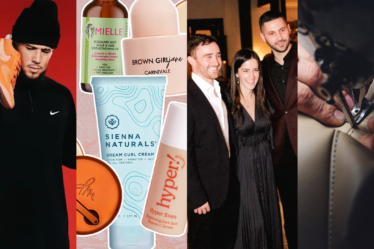For the past four years, 31-year-old Sonam Shah has been part of an after-work running club in London, frequented by a mixture of city workers and creative types.
Shah was never one of the group’s “cool kids,” not seeing the appeal of buying $300 supershoes from Nike or Adidas or wearing a technical hydration vest for a casual 5k run around a park. But around a year ago, her cultural cachet took off when someone asked her what tech she uses to track her fitness.
The device — a wrist-strap sensor from Whoop, a Boston-based wearable tech company — did not even track how far or how fast she ran, but rather how deeply she’d slept the night before, her stress levels and her cardiovascular capacity, aggregating those and thousands of other data points into digestible “scores” that told her how prepared she was for certain activities.
“It was like a switch had flicked,” she said. “All of a sudden it didn’t matter that I didn’t run a 5K in under 30 minutes … now all anybody wanted to speak about was their recovery score and heart rate variability.”
Running was historically one of the most stripped-down sports there was. It required no field, no teammates and no special equipment beyond gym clothes and a basic pair of running shoes. (Even those are optional: Mexico’s Tarahumara still do their miles in sandals.)
But today, even casual runners routinely outfit themselves in the latest technical apparel, footwear designed in a high-tech lab and any number of gadgets to track their health. These wearables themselves have evolved from the Fitbits of the 2010s used for daily step counts to products like Whoop and the Oura ring as awareness grows that factors like sleep, hormonal cycles and stress can have as much impact on your performance as the gear you wear.
Among the growing hoards of everyday athletes who frequent popular run clubs, run marathons or take part in high-performance competitions like Hyrox, these products have quickly become status symbols.
Shah said while people still compare what shoes they’re buying for the next race and what times they expect to achieve, the emphasis has shifted to discussing the data gleaned from their wearable tech. Almost every person who shows up wears either a Whoop or an Oura ring.
“Health and wellness is 100 percent the new status symbol,” said 24-year-old former footballer and fitness enthusiast Elliot Johnson, who recently completed an internship at Nike and is now training for the Ironman 70.3 World Championships in New Zealand later this year. Johnson, who is also big advocate for wearable tech, uses both a Garmin smartwatch and an Oura ring, which give him data about his performance, wellness and recovery far beyond the level he had access to even as a youth footballer.
An Aspirational Product
Companies like Oura and Whoop have savvily marketed their products as indispensable items to people like elite athletes, celebrities and CEOs, cementing them as part of the daily routines of high-performing figures. Oura’s rings, for instance, have been used by Real Madrid, the England national football team and organisations such as the NBA, NASCAR and UFC. They’re also worn by figures like Kim Kardashian and Prince Harry.

Whoop’s wrist strap was seen on several Olympic athletes, including gold medalist Sha’Carri Richardson, while the company has also raised investment from Cristiano Ronaldo, who’d been a regular customer of the business for around two years before they had a commercial relationship, said founder and chief executive Will Ahmed.
“If you go back 10 years, this sort of technology was only reserved for the elite, who’d have to go to a lab and strap into these clunky devices,” said Dorothy Kilroy, Oura’s chief commercial officer.
Now, regular consumers can have access to the same level of health tracking. Whoop’s monthly membership costs around $30, while the initial outlay for an Oura costs between $299 and $549, depending on the style you choose, plus the $5.99 monthly fee to access the app and your data.
The devices are also relatively unobtrusive — they don’t look or feel like “gadgets”. Oura is a simple metal ring, while Whoops is a tiny monitor with no buttons or display screen that can be worn on several areas of the body.
“A lot of these [newer] innovations that started off reserved just for athletes are now trickling down,” said Joe Holder, Nike’s global master trainer and a GQ wellness columnist. “I don’t think some people expected it to proliferate this fast.”
The Modern Wellness Consumer
There is a competitive element to these products’ appeal that reflects the shifting ways in which people measure — and show off — their fitness. It’s long been a common practice to post stats from jogs or workouts on social media, showing off metrics like distance, speed or the amount of calories burned. But now it’s just as common to see people posting their sleep or recovery scores before heading to their run club meet up, Johnson said.
For the past few years, Julius Juul, a wellness enthusiast, ultramarathon runner and co-founder of Danish ready-to-wear brand Heliot Emil, has been working on 444, a members-only wellness education platform which allows users to track qualitative data — such as feelings of anxiety and how motivated a user felt during their day — to complement the insights they receive from wearable fitness tech. Once accepted, users pay $500 for a 5-piece collection of fitness and movement clothing. Juul said the uptake took him off guard. He has so far onboarded 44 users, after opening the platform in late July, and has 2,220 more on the waiting list.
“There’s more of an understanding that it’s not just one thing that makes you fit and healthy,” Juul said. “More than ever before people want to learn about the connection between things like sleep, nutrition and physical exertion and what their means for their holistic wellness. This is where technology comes in.”

Wearables companies are receiving a boost from this wider adoption by the fitness community. Ahmed said Whoop has seen considerable growth over the past two years. The company has expanded into 20 new markets in 2024 and gone from being predominately a US business to an international brand.
The real expansion opportunity, however, is spreading the adoption of the technology among the rest of the general population — including those who don’t play sports or work out.
“I think that in the long run, most human beings are going to be wearing a sensor of some kind on their bodies that tells them everything about their health,” Ahmed said.



